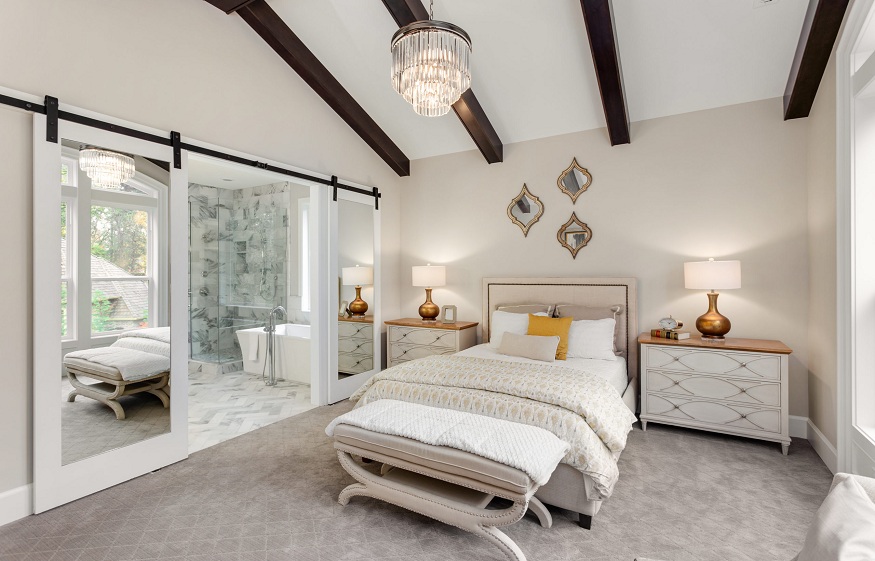A well-designed bedroom serves as a personal sanctuary, a place of relaxation, and rejuvenation. One crucial aspect of effective bedroom interior design is lighting. The right lighting not only enhances the aesthetic appeal of your bedroom but also plays a significant role in setting the mood and atmosphere. If you find yourself in a situation where your bedroom lacks the desired brightness, don’t worry! In this article, we’ll explore the importance of good lighting in a bedroom, along with five effective ways to brighten up even the darkest of spaces while incorporating bedroom colour ideas.
| IN THIS ARTICLE
Importance of Good Lighting in a Bedroom 5 Ways to Brighten Up a Dark Bedroom |
Importance of Good Lighting in a Bedroom
When it comes to bedroom interior design, lighting often takes a back seat, but it should not be underestimated. Proper lighting has a profound impact on the overall ambiance of a room. A dimly lit bedroom can feel gloomy and claustrophobic, affecting your mood and sleep quality. On the other hand, a well-lit room feels open, and inviting, and can positively influence your mental well-being.
5 Ways to Brighten Up a Dark Bedroom
1. Choose Light-Colored Paint
The significance of wall color in a bedroom cannot be overstated. Opting for a light-colored palette is a fundamental step in brightening up a dim space. Embrace a spectrum of soft and neutral shades like pristine whites, delicate pastels, and soothing soft grays. These hues have the remarkable ability to reflect and scatter light, infusing the room with luminosity. By selecting these shades for your walls, you create an expansive and welcoming atmosphere that counteracts the gloominess of a dark bedroom.
2. Strategic Use of Mirrors
Mirrors hold a transformative power in interior design, particularly in brightening up darker rooms. Unlock their potential by placing mirrors across from windows or other natural or artificial light sources. The mirrors capture and amplify the available light, effectively bouncing it throughout the room.
3. Layered Lighting
Elevate your bedroom’s luminosity by adopting a layered lighting approach. A single overhead light source can’t address the nuanced illumination needs of a space. Introduce a blend of ambient, task, and accent lighting to create depth and warmth. Table lamps cast a gentle glow for reading, while floor lamps provide cozy corners of light. Wall sconces contribute both to functionality and aesthetics. By harmonizing these lighting layers, you not only brighten the room but also craft a dynamic and inviting environment that resonates with your interior design vision.
4. Transparent and Reflective Decor
Selecting the right furniture and decor items can significantly impact your bedroom’s brightness. Opt for pieces incorporating transparent or reflective materials, such as glass and mirrors. Glass-top tables, mirrored dressers, or even reflective decor accents serve as conduits for light. These elements allow light to pass through or bounce off them, bestowing an ethereal and weightless quality to the room.
5. Maximize Natural Light
Windows are the gateway to natural light, and their potential should not be underestimated. Enhance the brightness of your bedroom by optimizing the natural light that streams in. Dispense with heavy drapes and opt for light, sheer curtains that permit sunlight to filter gently. Eliminate any obstacles that obstruct the windowsills, ensuring that the pathway for light remains unobstructed.
Transforming a dark bedroom into a bright and inviting space is entirely achievable with the right approach to interior design. Recognizing the importance of lighting in your bedroom is the first step. From there, it’s all about making strategic choices that maximize the use of available light and create a harmonious atmosphere. So always remember a brighter bedroom not only uplifts your mood but also enhances the functionality and visual appeal of the space.

